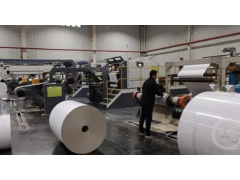News:Exosomes are extracellular vesicles with a diameter of 40 nm-160 nm. Exosomes carry a large amount of biological information from mother cells and play an important role in intercellular communication, and are regarded as the next generation of cancer biomarkers. Traditional methods for detecting exosomes have problems such as long time consumption and low sensitivity. Therefore, there is an urgent need to develop new methods that are fast, sensitive and can detect multiple exosomes simultaneously.
Recently, Song Yanlin's research group at the Key Laboratory of Green Printing, Institute of Chemistry, Chinese Academy of Sciences, combined printing of one-dimensional nanochains with surface patterning to design a zoned optical biodetection chip. This study used amide reaction to incubate specific antibodies on one-dimensional nanochains to capture target exosome particles. Experiments have found that when one-dimensional nanochains capture exosome particles, based on resonance-induced near-field enhancement, the color of scattered light from the nanochains changes in a way that is distinguishable by the human eye. The study prepared a series of multi-channel partitioned biodetection chips by designing substrates with hydrophilic and hydrophobic patterns. Research shows that by taking advantage of the significant differences in infiltration on the surface of the biochip, a single droplet to be tested is divided into a number of micro-droplets that do not interfere with each other, enabling rapid differentiation of exosome samples from normal people and glioma patients. This partitioned optical biochip is simple to operate, low in cost, and has good specificity and stability in complex biological fluid environments. It is expected to become a new disease diagnosis method and promote the development of liquid biopsy, health monitoring and other related fields.
Relevant research results were published in Advanced Materials. The research work is supported by the National Natural Science Foundation of China, the Ministry of Science and Technology, the Chinese Academy of Sciences and Beijing Municipality.







